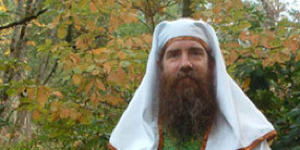Welcome to DU!
The truly grassroots left-of-center political community where regular people, not algorithms, drive the discussions and set the standards.
Join the community:
Create a free account
Support DU (and get rid of ads!):
Become a Star Member
Latest Breaking News
General Discussion
The DU Lounge
All Forums
Issue Forums
Culture Forums
Alliance Forums
Region Forums
Support Forums
Help & Search
The View From Outside | John Michael Greer

March 18, 2015 (Archdruid Report) -- Recently I’ve been reacquainting myself with the stories of Clark Ashton Smith.
Though he’s largely forgotten today, Smith was one of the leading lights of Weird Tales magazine during its 1930s golden age, ranking with H.P Lovecraft and Robert Howard as a craftsman of fantasy fiction. Like Lovecraft, Howard, and most of the other authors in the Weird Tales stable, Smith was an outsider; he spent his life in a small town in rural California; he was roundly ignored by the literary scene of his day, and returned the favor with gusto. With the twilight of the pulps, Smith’s work was consigned to the dustbin of literary history. It was revived briefly during the fantasy boom of the 1970, only to sink from sight again when the fantasy genre drowned in a swamp of faux-medieval clichés thereafter.
There’s no shortage of reasons to give Smith another look today, starting with his mastery of image and atmosphere and the wry humor that shaped the best of his mature work. Still, that’s a theme for another time, and possibly another forum. The theme that’s relevant to this blog is woven into one of Smith’s classic stories, The Dark Age. First published in 1938, it’s among the earliest science fiction stories I know of that revolves around an organized attempt to preserve modern science through a future age of barbarism.
The story’s worth reading in its own right, so I won’t hand out spoilers here. Still, I don’t think it will give away anything crucial to mention that one of the mainsprings of the story is the inability of the story’s scientists to find or make common ground with the neo-barbarian hill tribes around them. That aspect of the story has been much on my mind of late. Despite the rockets and rayguns that provide so much of its local color, science fiction is always about the present, which it displays in an unfamiliar light by showing a view from outside, from the distant perspective of an imaginary future.
That’s certainly true of Smith’s tale, which drew much of its force at the time of its composition from the widening chasm between the sciences and the rest of human culture that C.P. Snow discussed two decades later in his famous work “The Two Cultures.” That chasm has opened up a good deal further since Smith’s time, and its impact on the future deserves discussion here, not least because it’s starting to come into sight even through the myopic lenses of today’s popular culture.
I’m thinking here, for example, of a recent blog post by Scott Adams, the creator of the “Dilbert” comic strip. There’s a certain poetic justice in seeing popular culture’s acknowledged expert on organizational failure skewer one of contemporary science’s more embarrassing habits, but there’s more to the spectacle than a Dilbertesque joke. As Adams points out, there’s an extreme mismatch between the way that science works and the way that scientists expect their claims to be received by the general public. Within the community of researchers, the conclusions of the moment are, at least in theory, open to constant challenge -- but only from within the scientific community.
more
http://worldnewstrust.com/the-view-from-outside-john-michael-greer
InfoView thread info, including edit history
TrashPut this thread in your Trash Can (My DU » Trash Can)
BookmarkAdd this thread to your Bookmarks (My DU » Bookmarks)
0 replies, 795 views
ShareGet links to this post and/or share on social media
AlertAlert this post for a rule violation
PowersThere are no powers you can use on this post
EditCannot edit other people's posts
ReplyReply to this post
EditCannot edit other people's posts
Rec (7)
ReplyReply to this post